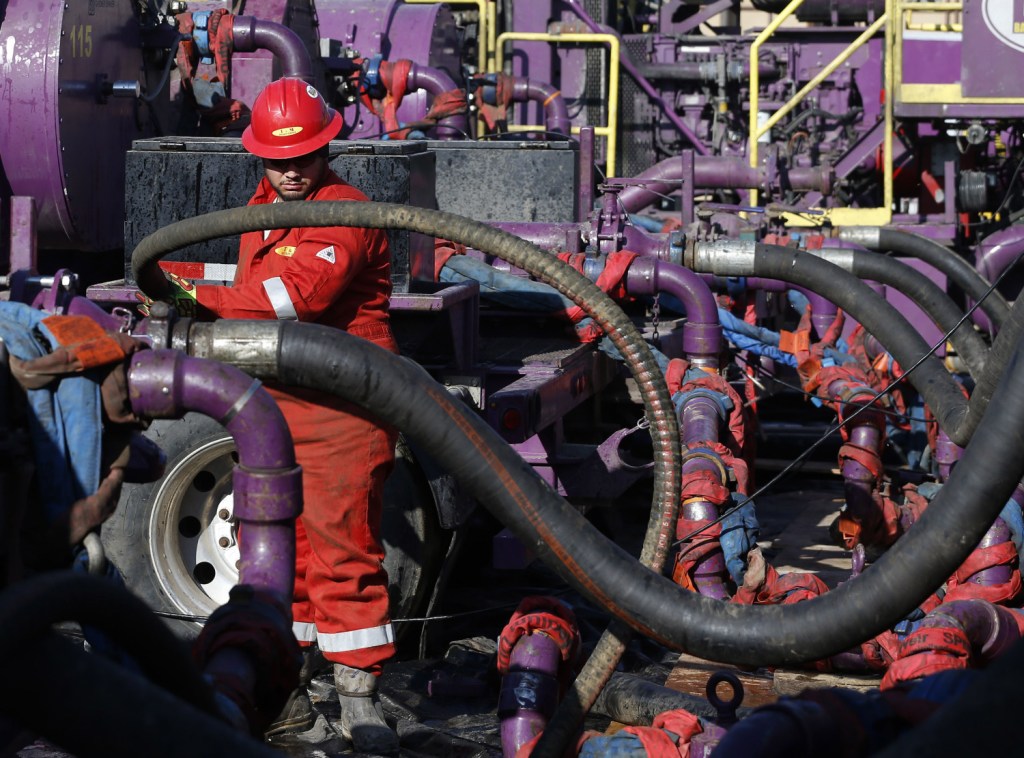Did you know the United States has become Saudi Arabia?
Well, minus the sand and support for Wahhabi fundamentalism – but plus the oil and natural gas, much more of it than can be found in the Kingdom of the House of Saud.
OPEC, schmopec. America is floating in black gold, and the reason is hydraulic fracturing, or “fracking” – pumping water underground (far below the water table), then drilling sideways to break up shale formations full of oil and natural gas.
As allegations of fracking’s hazards fail to prove out, secure supplies of our economy’s lifeblood are increasingly in our hands. A decade ago, the U.S. depended on imports for 60 percent of our needs. Today, it’s below 30 percent – and much of that comes from Canada and Mexico.
Embrace the sweetness: The Times of London reported Monday, “The shale oil and gas boom in America has led to output increasing from about 8 million barrels a day in 2011 to approaching 12 million barrels.”
By contrast, Saudi output is about 9.7 million barrels. And they aren’t happy: “Saudi Arabia is quietly telling the oil market it would be comfortable with much lower oil prices for an extended period, a sharp shift in policy that may be aimed at slowing the expansion of rival producers, including those in the U.S. shale patch,” Reuters reported Monday.
But as the Saudi share of the world market shrinks, that may prove unworkable.
The Wall Street Journal, citing soaring U.S. output and low global demand, Wednesday pegged the price of a barrel of U.S. crude at $81.84, down 20 percent since June 1. Wouldn’t we all like to see gas below $3 again?
Sadly, the biggest obstacle to pumping even more here is that the Obama administration has put so much land off-limits to drilling.
Who knew America’s real “War for Oil” would pit the well-being of its citizens against their own government’s restrictions?
As The American Interest website noted in an Oct. 8 analysis, “Where just a decade ago we were busy building liquefied natural gas import terminals, now we’re busy converting those facilities to handle exports, and the possibility of opening up crude exports (which are now illegal) has entered the American energy discussion.”
The American Interest continued: “By lessening our dependence on foreign sources of oil and gas, the shale boom has given us more options abroad, and in some cases … has given America more clout in diplomatic standoffs. There’s an economic success story here, and a geopolitical one as well – and both come courtesy of fracking.”
Meanwhile, Bloomberg News reported this week that Canada, understandably weary after years of waiting for the Obama administration to approve the Keystone XL pipeline from the “tar sands” of Alberta to the Gulf of Mexico, is strongly considering a 2,858-mile, $10.7 billion pipeline to an Irving refinery in Saint John, New Brunswick.
That’s a ton of money that won’t be spent here. And Keystone isn’t the only missed opportunity – there are a reported 25 Canadian cross-border infrastructure projects stalled by our government.
In support of Canada’s new plan, Reuters reported (under the headline, “EU abandons ‘dirty’ label for tar sands oil”) that the European Union is including Alberta oil in Canada’s overall fossil fuel exports instead of giving it special scrutiny.
The reason? To bypass EU regulations and counteract subsidies for wind and solar power that are driving fuel and electricity costs sky-high.
In Britain and other nations, the phrase “fuel poverty” is used to describe millions of consumers who cannot afford necessities because heating bills, boosted by back-breaking subsidies for “green” projects, have overwhelmed them.
Finally, do you recall those warnings of a “peak oil” doomsday scenario – that we had discovered all the oil there was and were rapidly depleting what little remains?
Well, The Wall Street Journal devoted the cover of its Energy section Sept. 29 to a report headlined: “Why Peak Oil Predictions Haven’t Come True – and Probably Won’t.”
The paper noted: “U.S. oil production did peak in the 1970s and sank for decades after, exactly as the theory predicted. But then it did something the theory didn’t predict: It started rising again in 2009, and hasn’t stopped.”
Indeed, industry analysts now believe we may end up leaving many fossil fuel deposits alone because newer sources will supplant them, like the 100-megawatt compact fusion reactors that Aviation Week and Space Technology magazine reported Wednesday are now under development by Lockheed Martin, with an estimated 10-year time frame to production.
Even without such revolutionary breakthroughs, however, the world’s proven reserves of fossil fuels can carry us through at least half a century, leaving plenty of time to find workable alternatives.
Either way, “peak oil” is a bogeyman whose time apparently came and went before anyone really noticed.
M.D. Harmon, a retired journalist and military officer, is a freelance writer and speaker. He can be contacted at:
mdharmoncol@yahoo.com
Send questions/comments to the editors.


